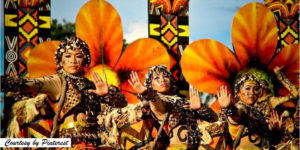Tacloban City was only a small fishing village and one of the barrios of Basey, Samar. It is formerly known as Kankabatok, named after the first settler Kabatok. Kankabatok means “Kabatok’s property.” The place was formerly under the political administration of Palo, but under the parochial jurisdiction of Basey, Samar. During this time, Kankabatok was changed to “Tarakluban” from the word “Taklub,” a basket-like equipment used in catching fish, crabs, and shrimps. Later, the name of the place was changed from “Tarakluban” to its present name, Tacloban.
In the late 18th century, the place became the trading point of the provinces because of its good location. Because of the ideal location of the port and its being well-sheltered and equipped with adequate facilities, Tacloban became the capital of Leyte on February 26, 1839.
In 1901, Colonel Murray arrived in Tacloban, and he became the first Military Governor of Leyte. There were several educational institutions founded in the place namely Leyte Normal School (now Leyte Normal University), Leyte High School (now Leyte National High School), Leyte Trade School (now Eastern Visayas State University), Holy Infant Academy (now Holy Infant College), and Tacloban Catholic Institute.
On June 20, 1952, Tacloban was proclaimed as a chartered city by virtue of Republic Act No. 760 signed by President Elpidio Quirino and witnessed by the incumbent Mayor Ildefonso Cinco (First City Mayor), which took effect on June 12, 1953.
On June 30, 1954, during the Feast Day of Sto. Niño the Patron Saint of Tacloban, the Speaker of the House of Representatives Jose B. Laurel did the honor of laying the cornerstone for the Tacloban City Hall at Kanhuraw Hill. Since then Tacloban attracted businessmen that are interested in putting up business in the city.
Additional Information
San Juanico Bridge
This 2.16 kilometer-long bridge connects the islands of Leyte and Samar. Formerly called the Marcos Bridge in honor of the late dictator Pres. Ferdinand Marcos, the San Juanico Bridge is the longest bridge in the Philippines. It is also said to be a gift of the late president to his wife Imelda Marcos who was a resident of Tacloban city during her youth. If you plan to cross the bridge, the best time is before 8am or after 4pm. You will surely feel the vibration every time a vehicle passes by. The bridge has sidewalks on both sides for walkers and joggers.
Highly Urbanized City (HUC)
Tacloban City became a Highly Urbanized City after holding a plebiscite on December 18, 2008, wherein 67 percent (67%) of the total registered voters of Tacloban City were in favor of the conversion of the city into a highly urbanized city. As a Highly Urbanized City, Tacloban is no longer under the administrative control of the provincial government of Leyte.
Festivals
Sangyaw Festival — Sangyaw means “to herald news.” It is a religious and a sociocultural event in the Philippines which is held every last week of June of each year. Tacloban City revived Sangyaw in 2008. There are various festival street dancers coming from the different parts of the country who participate in the tribal procession in June.

Pintados – Kasadyaan Festival — It is a religious-cultural event that focuses on body-painting traditions of the ancient warriors with tattoos known as “Pintados.”

